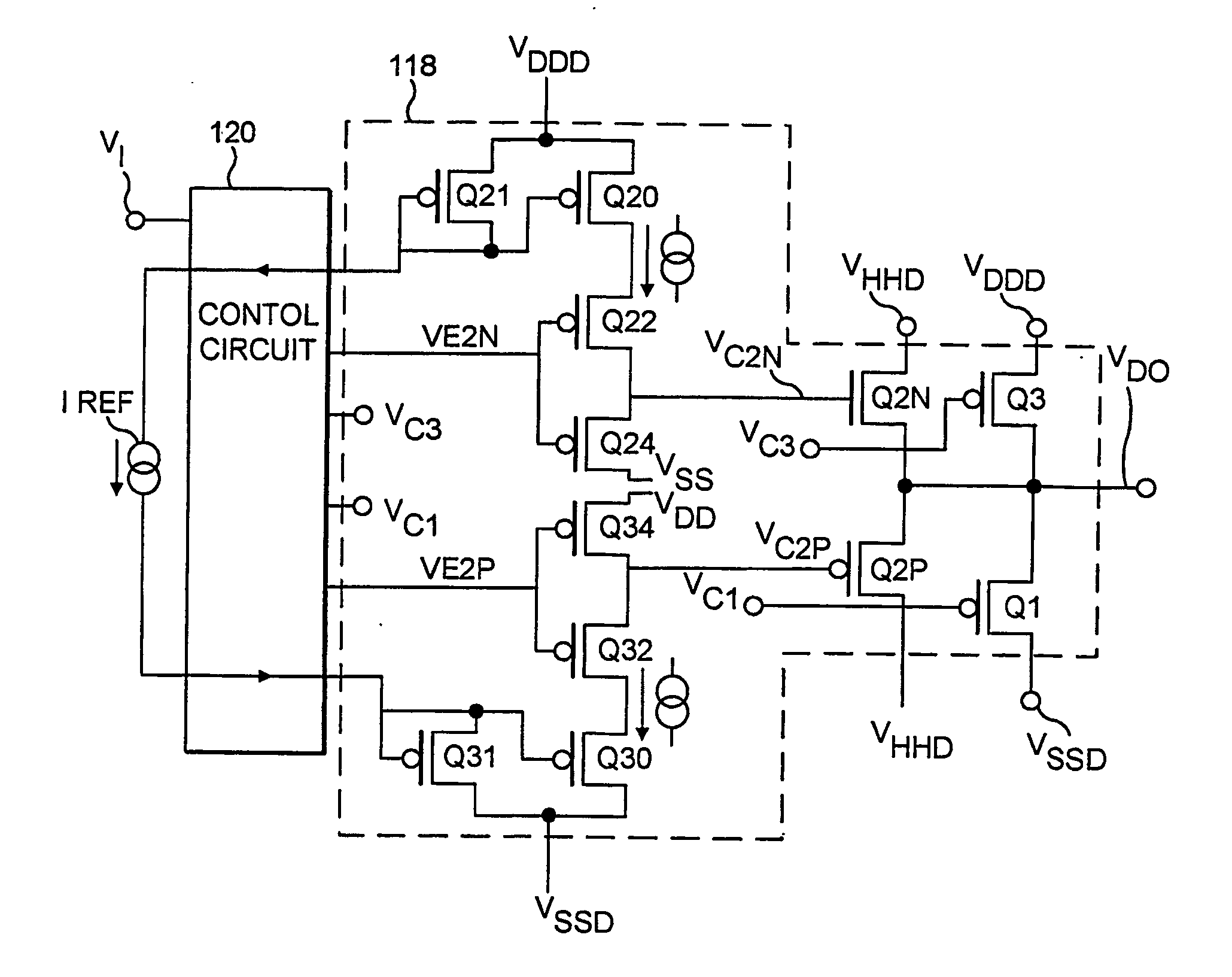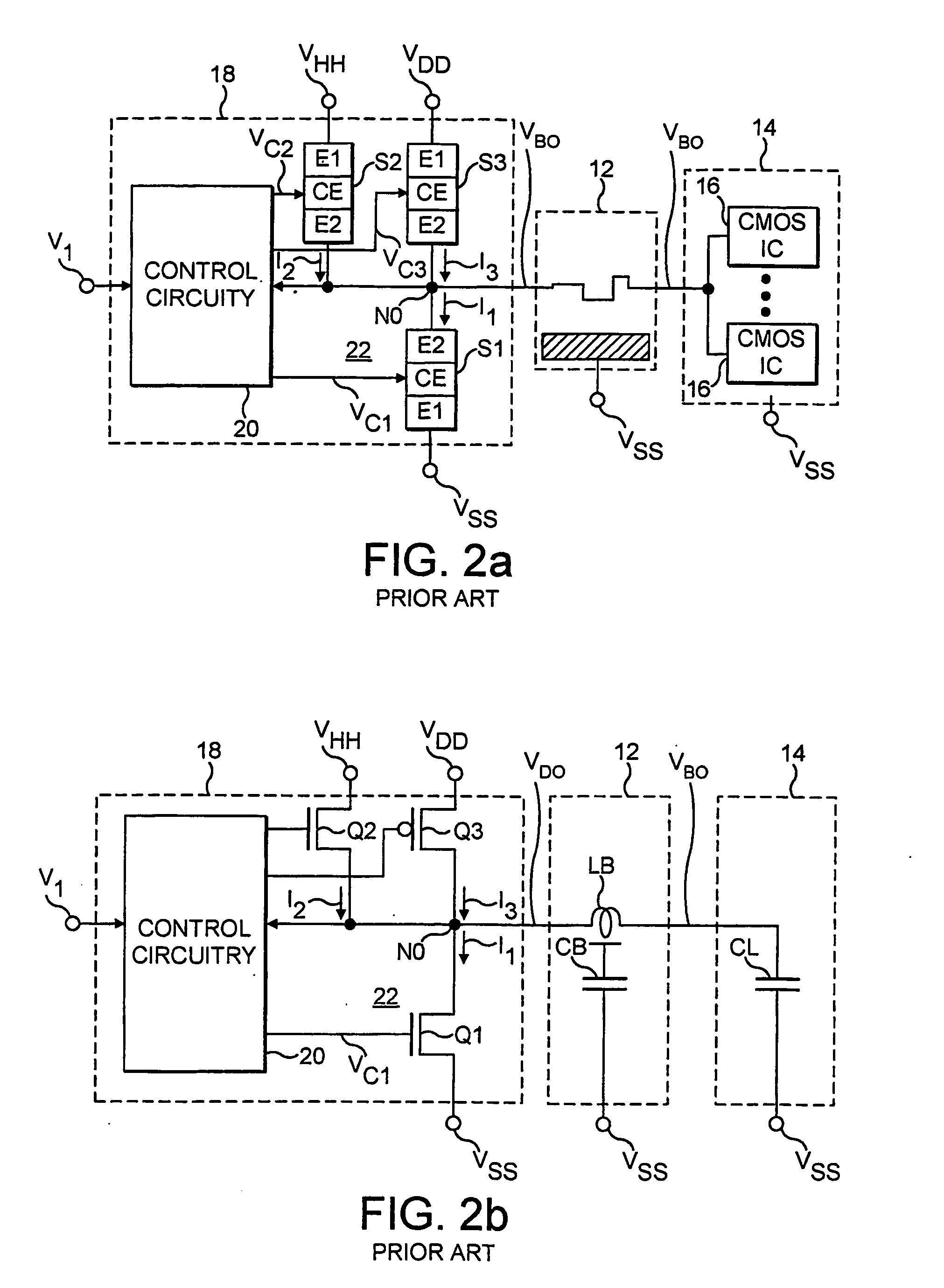Resonant line drivers
a technology of resonance line and driver, applied in the field of electromechanical circuits, can solve the problems of low power consumption, signal integrity problems, and cancel the current of incident wave, and achieve the effects of reducing power consumption, improving signal integrity, and reducing power consumption
- Summary
- Abstract
- Description
- Claims
- Application Information
AI Technical Summary
Benefits of technology
Problems solved by technology
Method used
Image
Examples
Embodiment Construction
[0056] Turning to FIG. 8, it shows a circuit similar to that in FIG. 6 but instead of the reservoir capacitance being supplied entirely between the VSSD and VHHD circuit nodes, the reservoir capacitor is split into two capacitances CR1 and CR2. CR1 provides capacitance between VSSD and VHHD while CR2 provides capacitance between VDDD and VHHD. Since each of CR1 and CR2 provides reservoir capacitance in parallel, each of CR1& CR2 can be made half the numerical size of CR in FIG. 6 to provide the same effective reservoir capacitance. But by using a split reservoir capacitor driver 19 in FIG. 8 is made more symmetrical so when a change in voltage of driver output signal VDO causes current to flow into or out of interconnect 12, a return current flows back into driver 19 split equally between package lead inductances LPL1& LPL2.
[0057]FIG. 9 shows waveforms that occur in relation to the circuit of FIG. 8. Comparing FIG. 7 with FIG. 9, whereas at time t1 in FIG. 7 since in FIG. 6 all ret...
PUM
 Login to View More
Login to View More Abstract
Description
Claims
Application Information
 Login to View More
Login to View More - R&D
- Intellectual Property
- Life Sciences
- Materials
- Tech Scout
- Unparalleled Data Quality
- Higher Quality Content
- 60% Fewer Hallucinations
Browse by: Latest US Patents, China's latest patents, Technical Efficacy Thesaurus, Application Domain, Technology Topic, Popular Technical Reports.
© 2025 PatSnap. All rights reserved.Legal|Privacy policy|Modern Slavery Act Transparency Statement|Sitemap|About US| Contact US: help@patsnap.com



